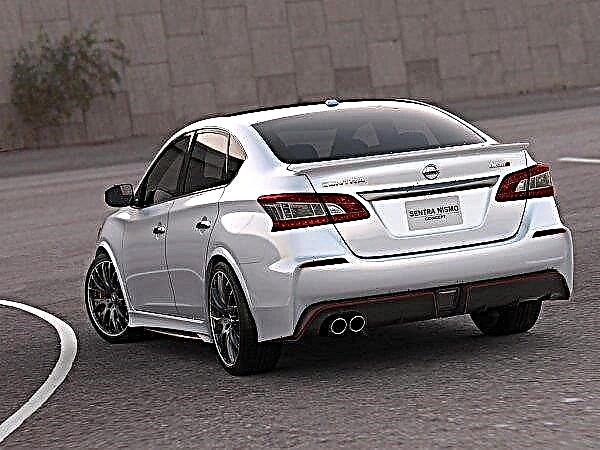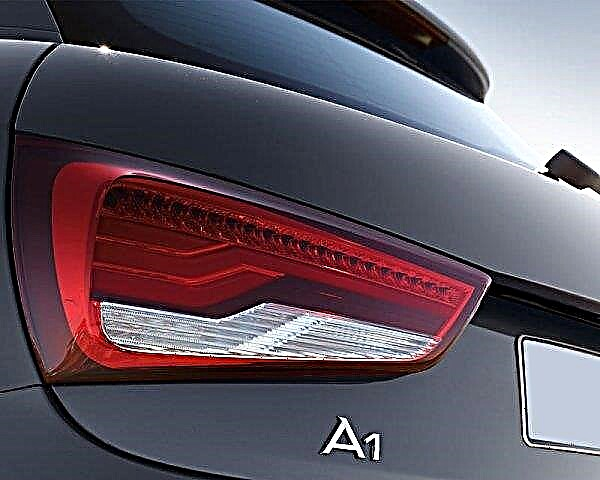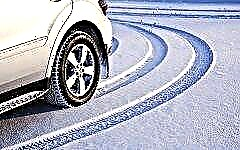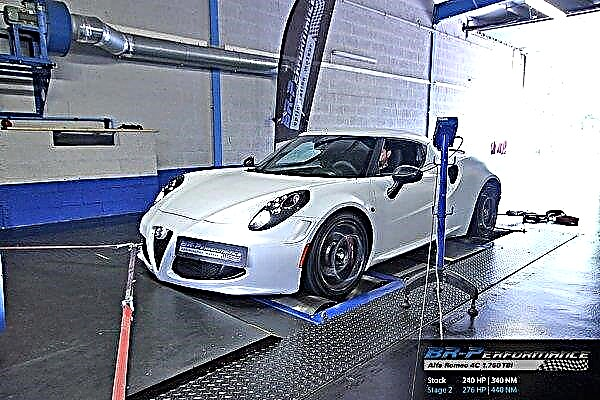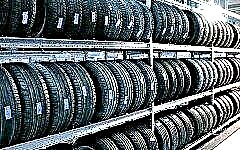

The content of the article:
- A wealth of choice
- Buyer Tips
The variety of manufacturers and brands of tires can be confusing for any buyer, especially if this is the first time this important component is purchased for a car.
The situation is aggravated by the fact that the tires differ not only in the name of the manufacturer - they are really very different. How to avoid mistakes and make the right purchase? Let's figure it out.
A wealth of choice

Tires are very diverse in their purpose. For driving in a dynamic sporty style - some, for measured movement - others. Moreover, when choosing tires, you need to take into account the peculiarities of the weather in the area where the car will be used.
Car tires also differ in season: there are tires for winter and for summer, and there is also a budget all-season option.
Summer tires can be used at temperatures above plus five degrees. They fall into the following categories:
- tires of universal type;
- tires for driving on roads;
- tires for driving on mud and rough terrain.
Universal tires marked A / T. They behave well on clean asphalt and mud. The disadvantages are driving noise, which is higher than in the case of asphalt tires, and less stability on urban asphalt.
Road tires - the most common option. Marking - Н / Т, Н / Р. They differ in low noise, high degree of traction, but it is better not to use them in mud and off-road.
Mud tires more suitable for off-roading. Their marking is M / T. On a clean road, they are noisy, but they cope well with mud and rough terrain.
Winter tires also have their own categories, depending on what type of winter the motorist is looking for:
- scandinavian studded;
- arctic;
- European.
Scandinavian studded tires designed for ice. On "bare" asphalt, such tires make noise, and it is not recommended to develop high speed on them so that the spikes do not fly out.
Arctic tires, or, as they are also called, "Velcro", are focused on harsh winter conditions, low temperatures. The treads of such tires are distinguished by a very dense pattern, their rubber is soft, which retains its properties well at low temperatures.
European tires designed for winter in a mild European climate (hence their name), in which precipitation in the form of rain and sleet prevails. They have a well thought out drainage system, but on an icy or snowy road, tires of this type are not the most convenient option.
All season tires good for short distances, low vehicle loads. They are inexpensive, but they do not last long. The only plus is the ability to use them at any time of the year.
In addition to the above classification, tires are also distinguished:
- low-profile - convenient for flat roads in the city, but unsuitable for off-road;
- Run Flаt tires - for cars with tire pressure monitoring, allowing you to drive up to 150 km even on punctured tires;
- off-road - for rough terrain and clay trails.
Also, tires are distinguished by the pattern. He might be:
- symmetrical directional - for high-speed sports driving, stable on a wet track;
- symmetrical non-directional - inexpensive, most common for the city, but not allowing high speed in winter;
- asymmetric directional - the most expensive option, which makes it possible to move at a good speed on wet roads, but differs in the complexity of installation;
- asymmetric non-directional - a popular choice for driving on wet roads, it has good handling.
Buyer Tips

As you can see from the above classifications, the abundance of brands and varieties of tires can really be confusing. Therefore, when buying, it is better to use a number of useful tips.
1. Choose the right time of purchase
It is best to plan the purchase of tires in advance - this is an opportunity not only to thoughtfully approach the choice, but also to save significant funds.
It is most profitable to buy tires during the off-season, from January to March or from May to September. It was at this time that a lower activity of customers was observed in shops and at the tire service: everyone had already changed their shoes, the queues disappeared, discounts on tires appeared in stores.
The time is also right when manufacturers change their product lines. During this period, stores strive to get rid of previous models as quickly as possible, doing this with the help of large discounts. Sometimes the discount can be as much as half the original tire price.
Finally, it is better to buy tires in advance for the simple reason that with a “burning” purchase in stores, there may simply not be the desired model and brand, and then you will have to take something else, and even at exorbitant prices.
2. Analyze opinions and reviews

Having stopped your choice on any brand of tires, it will be useful to get acquainted with the reviews of motorists. And here there is one important nuance: the most valuable will be the reviews of those motorists whose tires have served no less than a quarter of the declared resource.
That is, if a rubber has a declared maximum mileage of 80 thousand kilometers, the reviews of drivers who have had such tires “run” at least 20 thousand kilometers will be interesting and informative.
Any tires will be perfect as long as they are new. But statistics indicate that most of the problems with rubber arise when its resource is depleted by a quarter or more. At this time, there may be problems with balancing, uneven abrasion, aquaplaning, swelling on the rubber, and noise when driving.
Another important point is the make of the car on which the tires are installed. For the buyer, the reviews of the owners of cars of the same brand will be most useful. The modern range has a wide range of tires that can be fitted to almost any type of passenger car, from sports coupes to SUVs.
But on different types of cars, such tires behave differently, so it is important to know what it is like when operating on a car of a specific weight and power.
3. Average cost is not an indicator of durability

This advice is based on observations of recent years. Unfortunately, even manufacturers of high-quality tires have recently "lowered the bar", and now the concept of "the most expensive rubber" is not identical with the concept of "the most durable".
Famous brand manufacturers focus on the performance of their products, not their durability. If earlier buying expensive rubber meant buying it for a long time, today the emphasis has shifted: expensive tires are excellent characteristics that correspond to the declared data in the product passport, but at the same time such tires are not at all obliged to serve for a long time.
4. Features of using the car
When choosing the type of tires, it is important to take into account the real conditions in which the car is operated.
With constant operation of the car in the city cycle and traffic jams, it makes no sense to buy tires designed for the dynamic food of a sports car - with its excellent appearance and excellent characteristics such tires will “kill” very quickly in traffic jams.
5. Release date matters

Rubber is a material that changes over time. Even the best quality tires degrade over the years. Therefore, it is best to purchase newly manufactured products.
The shelf life of rubber largely depends on the conditions in which it is stored before being sold and installed on a car. You should be aware that rubber tires do not tolerate ultraviolet light, sunlight, and storage conditions in store warehouses can be very, very different. Therefore, there is only one way out - to try to buy tires that were stored there for a minimum time.
The tire production date can be seen on the side wall. Tires are marked with the year and week of manufacture (four-digit DOT code).
6. No used tires!

Tires are something that in no case should you buy used. If a car is purchased, there should be enough funds for its tires, otherwise it is not worth buying it at all. If other components can still be purchased used, then this is unacceptable with tires.
The reason for this strict rule is that used tires are very difficult to assess. The inner cord of the tire can be damaged, and this problem "crawls out" only when the air is supplied to the tire under pressure. Used tires, as a rule, are sold without wheels, and you will not be able to see the problem.
It's fair to say that there are good used tires, too, but this is more the exception than the rule.
7. Don't pay too much attention to the brand.
Modern production is such that none, even the most famous brand, insures the consumer against low quality.
Even Nokian and Mischelin have both excellent and not the best tires in their lineup. Therefore, you should not become an ardent fan of the brand, not paying attention to the features of various models.
8. Choice in the store

The chosen model must be carefully examined. An important characteristic is the sidewall of the tire. If it is thin, the car can get additional instability on the track. And an excessively soft wall will be unnecessarily vulnerable to lateral impacts on the tire.
A shallow tread is, of course, beautiful, but it should be remembered that after 15 thousand kilometers, many tread elements disappear, and with them the main characteristics of the tread.
9. The choice of tires depends on the intensity of car exploitation.
If a driver operates a car with a low intensity, he should not purchase tires that have a declared large resource. The reason for this warning is that rubber loses its properties over the years. Therefore, it may turn out that a lot of money has been paid for the protectors, the resource has not yet been developed, and the quality is already beginning to deteriorate rapidly.
If the annual mileage is low, it is better to purchase cheaper tires., which "cope" with the mileage, but during this time will not have time to lose the properties of the material.
10. Winter tires

Living in regions with severe winters requires a special approach to the choice of "winter" tires. You should not try to save money by purchasing "all-season" tires: such savings can be expensive. All-season tires are only good for warm climates without snow and ice, and they require frequent replacement.
Tire selection is a question not to be approached lightly, because not only ride comfort, but also safety on the road depends on how well the protectors are selected.

